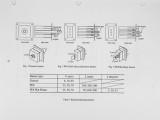| OCR Text |
Show jet, creating a widely spread flat flame. Velocity of natural gas and oxygen, V, P C D of the two oxygen nozzles, L, and oxygen nozzle angle, 0, were varied. Table 1 summarizes the experimental parameters of the tested three types of oxy-natural gas burners. For the generic oxy-fuel burner, V was varied at 8, 30 and 60 m/s. The lower limit of V was determined from the view point of flame stability and so was the higher limit from the restriction of supply pressure for natural gas and oxygen. For the FDI oxy-fuel burner, V and L were varied. Velocity, V, was varied at 35, 50 and 70 m/s. The PCD, L, was varied at 100, 200 and 300 m m . The upper limit of V was determined by considering supply pressure of the P S A (Pressure Swing Adsorption) oxygen supply unit which is popular to produce oxygen at low cost for industrial-scale furnaces. Since the oxygen pressure from the P S A is in the range of a few thousand of Pa (a few hundreds m m water column) without relying on expensive oxygen blower, maximum velocity is limited to 100 m/s to keep oxygen supply cost low. While the FDI burner needs high V for low NOx , the highest V was set at 70 m/s by considering the balance between the pressure and cost. The lower limit of V was determined from flame stability of the FDI flame and was set at 30 m/s. The P C D , L, was deteirnined from the physical restrictions of the experimental furnace. For the FDI flat flame oxy-fuel burner, V, L and 0 were varied in a similar manner. Velocity, V, was varied at 35, 50 and 70 m/s. The PCD, L, was varied at 50, 100 and 200 m m . The angle, 0, was varied at 5, 10 and 15 degrees. The effect of 0 was preliminary investigated. Fired in the open air, a widely-spread flat flame was observed with a few degrees of inclination of oxygen nozzles toward the axis of the gas nozzle. Separated short flames were observed at larger inclination of the oxygen nozzles. To create a widely-spread flat flame, 5-15 degree were found to be appropriate for the angle 0. 3. EXPERIMENTAL SETUP 3.1 Experimental apparatus Figure 4 shows the experimental furnace used in the study. The furnace was refractory lined with inner dimensions of 1200 x 1200 x 3600 m m . The furnace wall consisted of ceramic fiber of thickness 200 m m . A test oxy-fuel burner was mounted in the center of the furnace front wall. A n auxiliary air-fuel burner was mounted above the oxy-fuel burner to heat up the furnace before the oxy-fuel flame test was started. The flue gas was exhausted through the chimney located in the ceiling of the furnace end. The furnace temperature was measured with a sheathed type-R thermocouple inserted into the furnace. The furnace temperature was monitored at 3300 m m from the furnace front wall, 600 m m 3 |


























